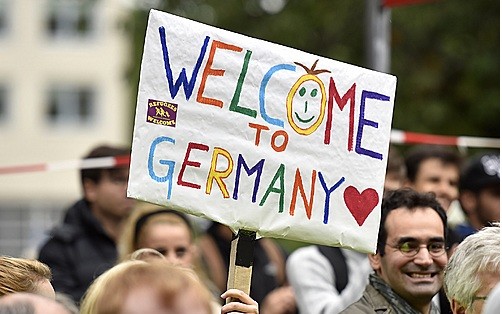
[Special Economy=Eunji Kim]With the current ISIS threat and Syria’s civil war, some refugees and other immigrants are left with nowhere to flee but toward places like Europe.
Along with the prediction that they will enter Europe at a highest record, various factors that will affect the country, as a result, are now highlighted.
According to a Eurozone economic forecast report released on Monday, the influx of refugees will increase the European Union’s total GDP by 0.2% to 0.3%.
This year, 800,000 refugees as well as immigrants came to Europe. There will be another 3 million here, counting from last year to next year. Consequently, the prediction is that the EU’s population will increase at the highest level, by 0.4%.
For Germany who has an open policy toward these folks, its GDP will increase 0.2% next year and 0.7% in 2020.
Because of 700,000 coming in this year, 530,000 next year, and 255,000 in 2017, Germany’s population will also increase—by 1.1%.
The reason this country is actively welcoming refugees is to deal with the declining working age population. 61% of the total population is of working age but that will decrease to 54% in 2030; With that, experts say the pension system can collapse.
Korea, too, will have a declining working age population since the baby boomers will advance into old age in 2020. So, the question rises: Does Korea have to adopt a welcoming policy toward refugees and immigrants, like Germany?
Currently, the number of refugees accepted into Korea stands at 4.6%, higher than Japan (0.26%). But when compared to other OECD countries, Korea falls at a low acceptance level.
The number of immigrants, this time, in Korea at year 2013, is 0.13% of the total population, again higher than Japan (0.04%) but at the lowest acceptance rate among OECD countries.
“Korea says it is a global country but our society still discriminates against refugees and immigrants,” said Park Soo Hyun of MWTV, a tv station targeted toward immigrants in Korea. “It’s particularly closed-minded about immigrants from third world countries or other less well-off places.”
But, a change is happening. The number of last year’s accepted refugees recorded at 94, up 64% from the year before, at 57.
Considering that, a problem can arise: in Germany, there is some violence and other crimes toward the refugees. Here, the Federal Criminal Police Office reported that attacks toward refugees occurred 53 times, at 104 cases. It increased four times from last year, which had 28 cases.
There are another 640 cases of intentional destruction of residences of refugees.
“The youth jobless rate is high and employment is not looking good,” said Cha Gyu Geun, lawyer whose work relates to labor and management relations. “We are at a difficult time too so why bring in people from foreign countries when that will further increase the hiring competition? It can aggravate our low-employment situation.”
Furthermore, according to OECD’s 2015 International Migration Outlook, the poverty rate for immigrants and refugees in OECD countries increased from 27% in 2006 to 29% in 2012.
The poverty rate for immigrants in Greece soared at 45%, and exceeded 35% in Italy, U.S.A, Finland, Belgium and Spain.
Experts say there should be certain regulations to combat these type of problems in the beginning so that no extra money is wasted later on. They are also emphasizing education and work training for refugees and immigrants should take place.

